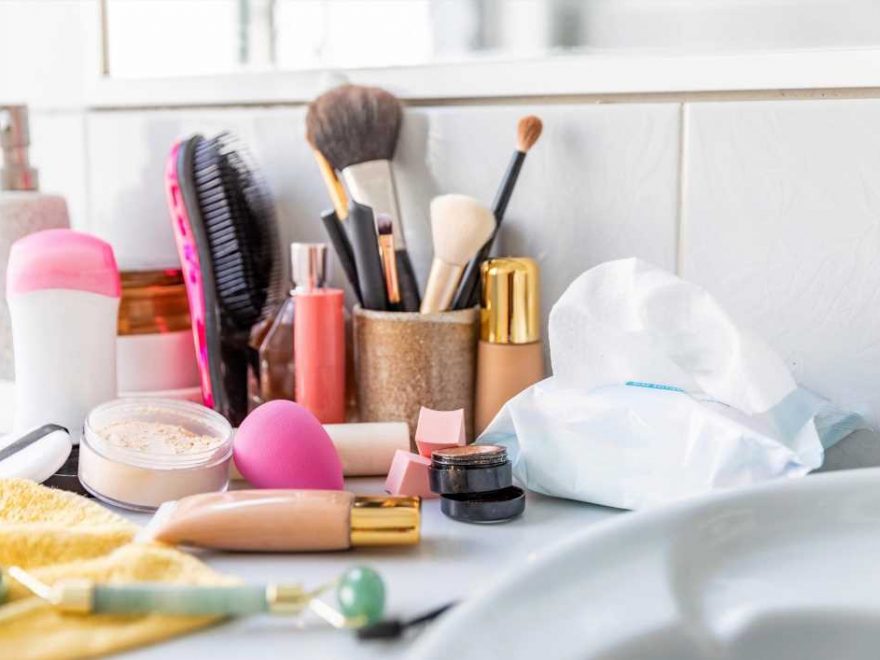MANY of the tools we use to help ourselves look and feel our best could be causing breakouts and spreading bacteria if we’re not cleaning them often enough.
So do you know how often you should be washing your make-up brushes, boiling your pumice stone or replacing your loofah?
Fabulous spoke to cleaning expert Henry Paterson, Senior Operations Executive at Housekeep, and celebrity make-up artist, Olivia Todd, to find out exactly how often we should be cleaning our household beauty tools – and how best to do it.
Pumice stones
Rubbing your feet with a pumice stone will leave your tootsies feeling silky smooth – but don’t forget all that dead skin you’ve just scrubbed off is now wedged into the crevices of the stone.
Henry recommends rinsing your pumice stone thoroughly with warm water after every use.
He says: “You can also use a little soap and an old toothbrush to scrub off any dead skin or other dirt that's stuck to the stone.
“Make sure that you've let the pumice stone dry completely before you put it away, and you may want to leave it to dry outside of your bathroom if it's steamy or humid.
“After a few uses, you should boil your pumice stone in water for five to ten minutes to sterilise it completely. Again, make sure it's dried fully before putting it away.”
Foundation and concealer brushes
If you’re not cleaning your make-up brushes often enough, you’re simply spreading bacteria from your face to your make-up and back again which risks breakouts, or worse!
Olivia says: “Foundation and concealer make-up brushes absorb the most make-up, so cleaning these once a week to prevent build-up of old foundation is paramount, not just for hygiene reasons but also for a more seamless application. The cleaner, the better!
“A build-up of foundation or concealer can take its toll on your brushes too and so cleaning them will definitely ensure they last longer.
“However, if your brush is starting to lose hairs, it's a tell-tale sign it's time to get rid – and this can happen anywhere between four and eight months if used every day.”
Olivia recommends the Sigma Spa Express Brush Cleaning Glove (RRP £24.00) for bringing dirty brushes and beauty blenders back to life.
She says: “I use this tool with washing-up liquid to wash first and then soak each brush in water mixed with lavender essential oil – the result is clean brushes that have a gorgeous scent, too.”
Eye make-up brushes
Yep, don’t forget about these either!
Olivia says: “I am always really careful with what I use make-up and tool-wise on the eyes as this is a very sensitive area and you absolutely don't want to risk infection here.
“I suggest cleaning eye make-up brushes once a month for this reason, plus too much build-up of eyeshadow can lead to a much heavier eye look than anticipated!”
Loofah
If your bath or shower is used multiples times a day in your household, or your loofah is hanging under a dripping tap or crammed into a shower basket, chances are it’s never fully drying between uses.
These damp, humid conditions are a bacterial heaven.
You can avoid that by thoroughly rinsing your loofah after every use and then allowing to dry.
Henry says: “For a deeper clean, you can wash a loofah in the washing machine with towels or flannels, or on the top rack of your dishwasher.
“Loofahs don't last forever though – plastic loofahs should be replaced after a couple of months at most, and natural loofahs should be changed at least once a month.”
Beauty blenders
Blenders and sponges have a shorter shelf-life than brushes and also need regularly cleaning.
“I wouldn't suggest reusing make-up sponges that you buy in bulk over and over again as these aren't designed to be reused,” says Olivia.
“Beauty blenders, however, are microbial-resistant and can last up to four months.
“They are porous though, so dead skin cells, bacteria and oil can clog them up, so I suggest washing once a week.
“I always have two on the go, one to wash and one to use whilst the other is drying.
Flannels
As with anything you use on your face: The cleaner, the better.
Henry says: “You should be washing your flannels after every use.
“It's super simple to wash them – just pop them into your washing machine on a warm cycle with your usual laundry detergent.”
Towels
You might only use your towel when you’re fresh out of the shower, but don’t think that means it doesn’t need regular washing.
You should be putting your towels in the laundry after every three uses.
Henry says: “Between each use, ensure they're hung up on a hook (with no more than one towel per hook), or draped over a towel rack so they can dry fully.
“Bacteria thrives in warm, damp conditions, so avoid leaving your towels in a heap on the floor.”
If you keep a clean spare set of towels at the ready, you won’t be tempted to overuse them.
“It's also a good idea to let your flannels or towels dry fully before you put them in the laundry basket,” he adds.
Meanwhile this grim footage will make you think twice about using face wipes to get rid of your foundation.
And a fuming woman finds out she’s got an STD & announces it on Snapchat so ‘anyone she’s slept with’ in the last month knows.
Plus this mum shared her space-saving hack to store mince in the freezer & it makes it cook quicker too.
Source: Read Full Article



